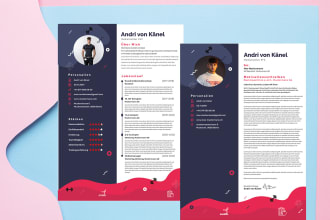Browse categories
Job Descriptions
Find superstar talent with a professional job description.
|544 Results
Sort by:

Level 2
I will create job description jd adverts policies forms and organograms
From $20
Offers video consultations

Level 2
I will expertly craft job descriptions, job application and job posting
From $10Offers video consultations
Level 2
I will create job description jd adverts policies forms and organograms
From $20
Offers video consultations
Job Descriptions FAQs
What is a job description?
A job description is used by companies in the process of recruitment and it is a document that is targeted at internal or external candidates who apply for certain roles in the organization. It gives an informative outline of the main roles and responsibilities of the position and it’s normally put together by the recruiting manager and the talent acquisition team responsible for the selection process, or sometimes with the help of an external recruiter or agency.
Why is a job description important?
Job descriptions are important for employees to understand their roles and for employers for continuous assessment against company goals and industry standards and developments. They ensure you set clear expectations and recruit the best talent to achieve your objectives. Job descriptions are key in reviewing performance and ensuring higher productivity by setting clear demands. They can also come in handy in mitigating risk and limiting liability by providing clarity from day one and acting as a legal safeguard for employers and employees.
How can job descriptions be used as a management tool?
Maintaining an up-to-date job description by drafting and reviewing it is very often neglected by companies even though it can be a valuable tool in achieving the organization’s goals. To make them more useful they should include all physical elements of the job, all expected tasks and responsibilities of the role as well as legal requirements (e.g. certificates, diplomas), skills and experience needed to perform the job. All performance metrics and expectations should be listed and the JD should always be dated.
What is typically included in a job description?
Simply put a good job description should give an accurate account of what an employee is expected to do - all duties and responsibilities of the position and all requirements, including education and experience, that he/she should have to be suitable for the job. It doesn’t just describe the job but it sets expectations in terms of development, results, performance and evaluation. It’s the basis for fairly rewarding the employee and sets a legal framework for the role.
How should a job description be written?
A job description is essentially a summary of the main activities and responsibilities for the role, and also the required skills, qualifications and experience for performing it. It’s also important to include key details about the organization in it, such as the mission, vision, culture and all the benefits it will provide to the employee in order for the candidate to get a fair impression of what to expect. Reporting lines and salary range can also be included.
What are the main differences between job description and job specification?
Even though the two terms are used sometimes interchangeably, there are differences between them. The job description is a summary derived from the job analysis including the main duties, responsibilities, reporting lines, salary and benefits and other general information about the role. The job spec is derived from the job description and it gives the candidate the criteria for eligibility for the position such as skills, level of experience, personality characteristics, education and abilities required for performing the job.
















